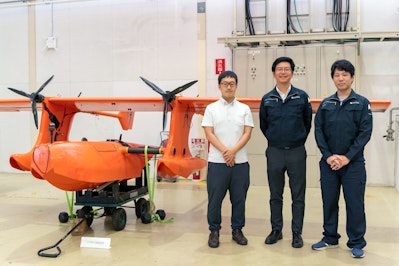
A joint interview with the Yokota Laboratory at the University of Tokyo has been published. It appeared in the web magazine "Maybe the Future."
Our collaboration with Associate Professor Yusuke Yokota of the Institute of Industrial Science (IIS), The University of Tokyo has been featured in IIS’s web magazine “もしかする未来”. The article presents the behind-the-scenes story of a world-first initiative: centimeter-level seafloor positioning using an unmanned aerial vehicle (UAV), realized through industry–academia collaboration.
Publication Information
- Media: Web magazine “もしかする未来” (Institute of Industrial Science, The University of Tokyo)
- Article format: Conversation — Assoc. Prof. Yusuke Yokota × Masata Kaneda (President & CEO, Hama Co., Ltd.) × Kento Suzuki (Technical Lead)
- URL (mutual link): https://magazine.iis.u-tokyo.ac.jp/en_article/p_5456

The feature takes the form of a round-table conversation with Assoc. Prof. Yusuke Yokota (IIS, The University of Tokyo) and our team—Masata Kaneda (President & CEO) and Kento Suzuki (Technical Lead). It traces how the collaboration began and how we co-developed a flying-boat–type UAV capable of long-range flight and sea-surface takeoff/landing to meet the demands of offshore observation.
In the discussion, we share concrete engineering steps taken to integrate oceanographic instruments into the airframe, including structural refinements around the transducer mounting and iterative improvements drawn from repeated trials at sea. Field experiments conducted off the Fukushima Robot Test Field coast and in Sagami Bay helped us identify issues early and steadily raise reliability through a cycle of testing, debriefing, repair/adjustment, and re-testing.
By combining aircraft design, operations engineering, and observation workflows, the joint team achieved centimeter-class seafloor positioning from the air. The article also highlights our shared aim: to increase the frequency and efficiency of seafloor observations, and to accelerate real-world deployment of UAV platforms for ocean monitoring, disaster risk reduction, and infrastructure inspection.
【Related Articles】